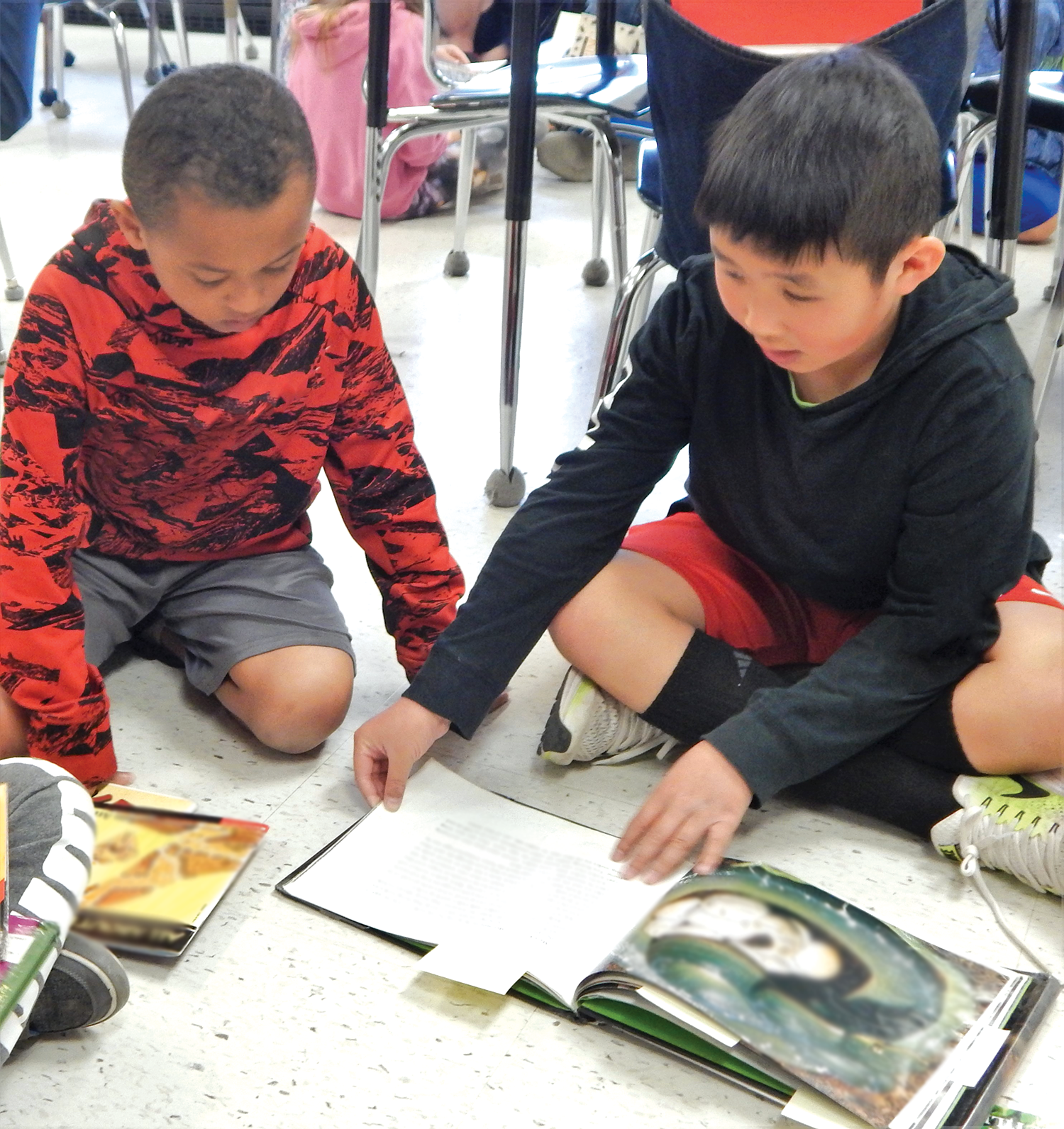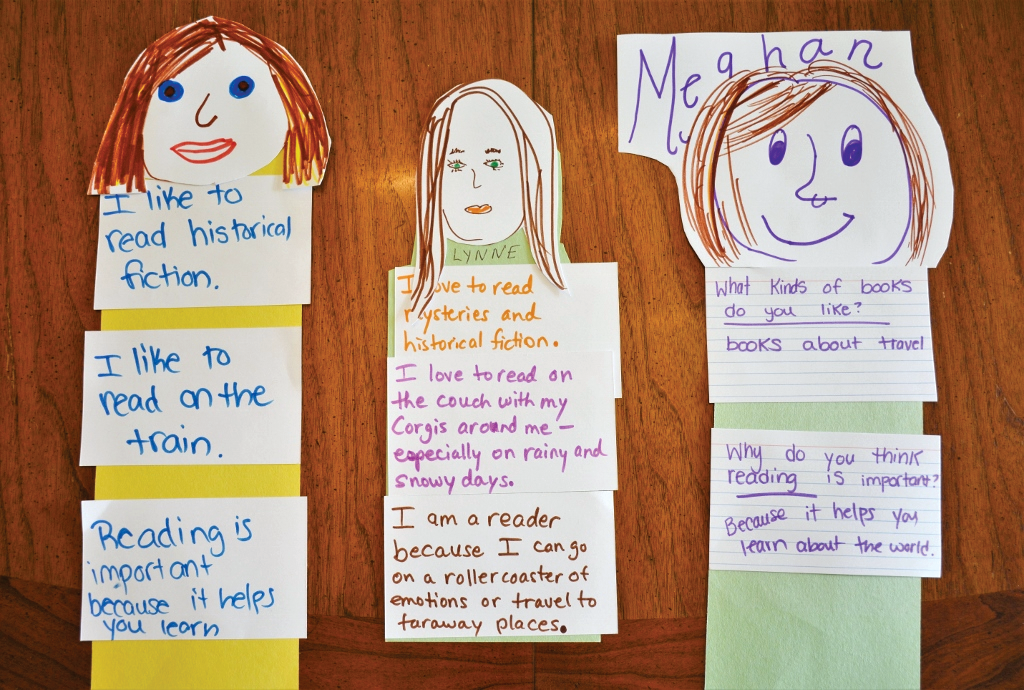In a safe place, readers understand that their ideas, thoughts, and questions have a place in classroom conversations. They know that their thinking is valued and makes a difference. In this community, risk-taking can become commonplace, encouraged, and fostered. Regie Routman encourages us to see the classroom through our students’ eyes. In Literacy Essentials: Engagement, Excellence, and Equity for All Learners, Routman states: “If we truly want students to excel, we need to be sure the setting, tone, and classroom culture encourage and enhance risk taking, deep conversations, and meaningful learning.” Who are the readers who enter our classrooms on the first day of school, and how do we create a safe community where they can thrive?
Getting to Know Our Students
Our readers come to school with individual tastes and desires. They see themselves as readers of comic books, chapter books, pictures books, and magazines. However, there are many students who do not read and do not care to join the “literacy club.” Our job is to find out as much as we can about these readers and welcome them to our reading community. We can begin with an easy-to-use interest survey or simply have a whole group discussion about the kinds of books we enjoy reading. Sharing books on topics that appeal to the age level and the cultural identities of our students is one way of building interest. We could ask students to join us in creating a bulletin board to advertise our favorites — books we’ve read and returned to more than once. We might also ask students to share an autobiographical sketch of their reading identity. The idea here is to get kids talking about books in positive ways while sharing their reading identities and interests.

We can begin to establish a community of readers with a review of students’ past reading habits, in school and out of school. We might place students into small groups to give mini–book talks about what they read last year or over the summer during the first few weeks of school. Teachers may want to sit in on one or several groups to informally evaluate students, listening to conversations and writing down important observations. These observations can lead to individual reading conferences where teachers learn more about students’ reading habits, what they take away from a book, and how they handle reading challenges on their own. These conversations can help us set goals for the first few weeks of school. The goal here is to learn a great deal about our new students as readers right away. By allowing children to talk about the books they’ve already read and value, we eliminate the pressure to “correctly” choose a first book during reading workshop. When we spend time giving our students a chance to chat about their favorites, we immediately create a positive tone, partnerships begin to form (kids gravitate to other kids who read the same books, author, or genre), and we’ve already conducted formative assessment without making students feel anxious.
In any one classroom, there are many kinds of readers. We want all our students to accept and respect the preferences of their peers. Reading workshop is the safe place that we celebrate all readers for the choices they make and the reading they do, not just the readers who have read the greatest number of pages or the highest number of books. It means the community celebrates with Seth and Alia when they finish their first chapter book as third graders or when Drew, a fifth grader, shares that he has just finished reading an entire book for the first time by Halloween.
Building a Community through Conversation: Learning to Listen and Respond
In our reading workshop, we usually designate a place where readers can gather as a community to have readerly conversations and learn from each other. This closeness is one way to help students bond and it provides an opportunity to learn how to talk to each other. It is through these conversations that a community begins to form as children talk with many peers and as a class, letting others’ thinking in and growing their reading identities.

In Reading Essentials, Routman encourages us to create structures that maximize participation and learning. These include small group discussions about books in literature circles and book clubs, student-led literature discussions, partner reading, and shared reading opportunities. Learning how to maximize our time for conversations instead of teacher-led Q&As will help students build confidence and develop their unique voices. Brenda begins by modeling how to turn and talk, intentionally helping children learn to face each other, make eye contact, and listen to each other’s ideas and opinions, then how to respond to each other. All voices must be heard.
We try to make initial conversations non-threatening and light. Where did you read last night? What is surprising to you in the read-aloud? Which character in our read-aloud would you like to have lunch with?
As the children become more comfortable with each other, we can support their conversations with more personal connections to what is being read as well as personal insights. We ask children to share their conversations, sometimes asking them to share their partner’s thinking rather than their own — which feels safer for many kids (especially in the beginning of the year) and also requires them to be active listeners.
During these conversations (as well as instructional time and in individual conferences), it is helpful if the teacher refers to the class as readers. “Readers, today as we gather on the rug to begin reading workshop, I would like you to think about the reasons you choose a book to read on your own.” By calling our students “readers” as often as possible, we highlight this part of their identity and — if they’re not quite there yet — invite them to begin to see themselves as readers. Bringing our class together as a community to talk about books and reading sends the message that we are all learning to read together.
 Brenda J. Krupp has 33 years of experience as a classroom teacher and staff development coach in the Souderton Area School District in Pennsylvania. She has worked with the National Writing Project and the state affiliate (PA Writing and Literature Project) as a co-director for the Summer Invitational Institute and as a presenter at National Council of Teachers of English (NCTE) conference, Keystone State Literacy Association conference, as well as local conferences.
Brenda J. Krupp has 33 years of experience as a classroom teacher and staff development coach in the Souderton Area School District in Pennsylvania. She has worked with the National Writing Project and the state affiliate (PA Writing and Literature Project) as a co-director for the Summer Invitational Institute and as a presenter at National Council of Teachers of English (NCTE) conference, Keystone State Literacy Association conference, as well as local conferences.




